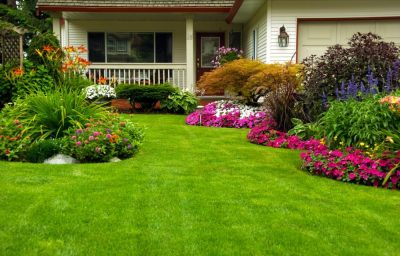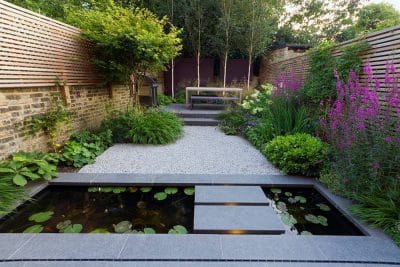
Florida house plans effortlessly blend breezy style with everyday practicality. Step onto a deep porch and you’ll feel the trade winds; slide open a glass wall, and the living room flows seamlessly into the lanai, blurring the line between indoors and out. These homes are thoughtfully designed for Florida’s climate and lifestyle, with stucco walls, red-tile roofs, and generous overhangs that provide cooling shade. Paired with high-efficiency framing, they help keep interiors comfortable, conserve energy, and stand strong against coastal storms.
From relaxed beach bungalows to spacious suburban ranches, these designs cater to every family’s needs. Yet they all share a common promise: open, light-filled interiors that promote easy movement and year-round outdoor living. Whether you’re building your forever home or crafting a seasonal retreat, modern Florida house plans prioritize comfort, functionality, and timeless curb appeal, making them the ideal blueprint for living beautifully in the Sunshine State.
Modern And Functional Features Of Florida House Plans
Below are five design moves that keep your Florida home cool, storm-ready, and comfortable day to day.
- Open-concept living core:
An open core is the heart of every modern plan: the kitchen, dining, and great room align on a 45-foot sight line, so you prep tacos, help with algebra, and chat with guests without changing rooms. A 9 × 4-foot island seats four and hides recycling pull-outs, while an 11-foot tray ceiling vents hot air upward. Slide a 16-foot glass wall into its side cavity, and spring cooling bills drop about fifteen percent. Add blocking during framing, and you can hang pot racks or pendant lights later without opening drywall. - Indoor–outdoor flow:
True Florida living happens on the lanai. Pocket sliders replace the back door and remove the barrier between inside and out. A 12-foot-deep covered terrace, wired for fans and a weather-rated TV, runs the length of the house. Matching porcelain pavers blur the threshold, and a pool bath keeps wet feet outside. Rough in a gas stub and 240-volt outlet while walls are open; upgrading to a full summer kitchen later takes a single afternoon instead of a disruptive remodel. - Climate-ready materials:
Eight-inch concrete-block walls, impact-rated low-E glass, and standing-seam metal or clay-tile roofs shrug off 140-mph winds, termites, and salt spray. Coastal lots raise living floors ten to twelve feet on pilings, while inland builds rest on cost-saving slabs. Because the envelope blocks solar gain, heat pumps cycle fewer times in July, and insurers often quote lower premiums. - Energy-savvy shell and tech:
Spray-foam attics reach R-30 and taped sheathing seals every seam. Rafters ship pre-notched for photovoltaic conduits, turning future solar into a one-day job. Inside, variable-speed heat pumps pair with learning thermostats, and induction cooktops plus all-LED lighting trim wattage. A 2,400-square-foot home built to this spec uses about twenty-eight percent less electricity than a 2015 code-minimum counterpart. - Single-level convenience:
Florida’s flat terrain favors one-story footprints. Without stairs, toddlers roam freely and grandparents visit with ease. A 68-foot-wide plan keeps ducts in a single layer, lowering construction cost and simplifying service. Split-bedroom placement, primary suite east and kids’ wing west, cuts nighttime noise at the parent doorway by roughly ten decibels, so late-night gaming never wakes early sleepers. Give each major room its own slider, and everyone moves fluidly between pool, kitchen, and playroom.
Design Styles: Contemporary, Ranch, Beach House, And More

Florida’s climate lets you pick a visual theme, then fine-tune it for sun, salt, and storms. Use these snapshots to choose the look that best matches your lot, budget, and weekend plans.
1. Mediterranean courtyard charm:
Stucco walls, arch-framed windows, and red barrel-tile roofs echo early Miami. The curved tiles vent attic heat, cutting evening temperatures by about 20°F. Plans wrap a paved courtyard so every main room enjoys shaded light.
Action: If you want dinners around a bubbling fountain, choose a U-shaped plan and budget roughly $9 per square foot extra for clay roofing.
2. Tropical modern pavilion:
Low-slope roofs project two feet past floor-to-ceiling glass, shading 60 percent of midday sun. Concrete, ipe, and powder-coated aluminum shrug off termites and salt spray. Inside, a thirty-foot-tall great room pockets open toward the pool.
Action: On a narrow city lot, run the long glass wall front-to-back so you gain breeze and privacy at the same time.
3. Coastal beach house on stilts:
Pilings lift living spaces ten to twelve feet above FEMA flood lines, turning the ground level into parking or an open-air cabana. Standing-seam metal roofs resist 140-mph gusts, and fiber-cement clapboard keeps color bright in salty air. Reverse-living layouts move the kitchen and lounge upstairs for sunrise views.
Action: Rough-in an outdoor shower during framing to keep sand out of hardwood floors later.
4.Wide-open ranch:
One-story footprints stretch 70-plus feet across inland lots, keeping every room on slab level. A 5:12 hip roof uses 8 to 12 percent less framing lumber than a comparable two-story, and split wings let late-night gamers and early risers coexist.
Action: Start with a simple rectangle to save cash; add a screened lanai once the budget recovers.
5. Luxury estate statement:
When land and budget climb, architects scale everything. Expect twin kitchen islands, a twelve-seat cinema, and forty feet of glass framing an infinity pool. Whole-house generators and concrete roof panels turn storm readiness into a true amenity.
Action: Build a conditioned gear room off the garage so smart-home servers and battery banks stay at 72°F year-round.
6. Mix-and-match freedom:
Florida zoning lets you blend styles as long as the wind-load math checks out. A modern ranch may wear cedar-slat screens; a coastal contemporary might perch its glass cube on pilings.
Action: List must-have climate features first—impact glass, spray-foam roof—then layer on aesthetic touches. That order keeps costs clear and permits reviews to be smooth.
Key Elements of Family Homes
Florida families juggle school runs, pool days, and hurricane prep, so the blueprint has to multitask. Smart plans keep mornings smooth and storm nights safe. Use the six checkpoints below when you compare drawings.
1. Ample bedrooms and baths:
Three or four bedrooms inside 2,000 to 2,600 ft² suit most households. Secondary rooms at 11 × 12 ft fit twin beds now and queen beds later. A primary suite sized for a king bed plus a five-piece bath becomes your after-pool retreat.
Action: If two kids share one bath, choose a Jack-and-Jill layout with a 60-inch double vanity so morning prep finishes 40 percent faster.
2. Split-wing privacy:
Keeping the primary suite at least 25 ft from the kids’ wing lowers doorway noise by about 10 dB, making night feeds or late gaming less intrusive. In two-story homes, stacking children’s rooms over the garage preserves a guest-ready main floor.
Action: Trace circulation paths now; if adults must cut through the children’s zone to reach the laundry or pantry, slide a wall before permitting.
3. Multipurpose flex room:
A 10 × 11 ft spare near the foyer starts as a nursery, turns into a homework studio, and later becomes a home office. Framing it during the build adds roughly 5 percent to shell cost; finishing later can triple that outlay once trades return.
Action: Install a closet and a pair of floor outlets during rough-in to future-proof the space.
4. Family-centric kitchen:
A nine-foot island seats four and hosts science-fair volcanoes. A 5 × 6 ft walk-in pantry hides bulk groceries, keeping counters clear. Place the sink beneath a window that faces the lanai so you can watch cannonballs while draining pasta.
Action: Pair an induction cooktop with a variable-speed hood to trim July energy use by up to 8 percent and keep indoor air fresh.
5. Storage that tames clutter:
Walk-in closets in every bedroom, a linen press beside the hall bath, and a broom cabinet near the kitchen corral gear. A mud-room bench at the garage door traps sandy flip-flops. Extending the two-car bay by four feet creates overhead racks for kayaks and holiday décor.
Action: Block ceiling joists now for future bike lifts and attic pull-downs.
6. Built-in safety and comfort:
Impact-rated windows, reinforced garage doors, and a 200-amp generator panel protect you during storms. One-story footprints erase stair hazards; porch eaves four feet deep keep thresholds dry when squalls sweep in.
Action: Ask the builder to back every bath wall with plywood for grab bars—cheap today, priceless after one ankle sprain.
Cost Considerations: Affordable Versus Luxury Options
A Florida build can run from starter-friendly to eight figures. Costs only make sense when you sort them into four levers—size, finishes, site, and fees—plus two strategy lanes: stretch-and-save or go full luxury. Lock these factors early, and the final invoice lands right where you planned.
1. Size and complexity set the floor
Definition: Square footage drives most of your budget.
Expansion: A one-story plan under 2,000 ft² with straight walls and a hip roof usually costs 180 to 240 dollars per square foot in inland counties, roughly 15 percent below the statewide median. Add a second floor, vaulted ceilings, or intersecting roof planes, and framers need extra steel, more labor, and pricier engineering stamps, pushing you toward $300. Even a 200 ft² bump in conditioned space can add 10,000 to 15000 dollars once drywall, flooring, and HVAC scaling follow.
Action: Sketch furniture onto the plan. If hallways or bonus rooms stay empty on paper, trim them now and keep the cash.
2. Features and upgrades widen the gap
Definition: Finishes swing costs faster than structure.
Expansion: Entry-level specs rely on shingle roofs, stock cabinets, and a paver patio. Swap in clay barrel tiles, custom maple cabinetry, and a built-in summer kitchen, and your materials line can jump by five figures. Pools prove the point: a fiberglass shell might land at $35,000, while a gunite pool with sun shelf, spa, and glass-tile band often tops $120,000. Impact windows cost about $55 more per square foot of opening than standard sliders, yet they can shave hundreds off your annual insurance bill.
Action: Build a three-column wish list—must-have, nice-to-have, future-phase. Price only column one at contract signing.
3. Location and lot prep add hidden layers
Definition: The ground under your feet influences direct and indirect costs.
Expansion: Barrier-island lots command high land prices and tighter codes. Raising your living floor ten to twelve feet on pilings to clear FEMA flood lines adds $18,000 to $30,000 before walls rise. Inland sand lots avoid flood gear but may need grading, fill, or tree removal. A soil report costs a few hundred dollars and can prevent five-figure surprises during excavation. Case in point, the sustainable waterfront residence in Fort Lauderdale shows how thoughtful site planning weaves hurricane-grade defenses and passive-cooling features into a striking modern silhouette.
Action: Order a topo survey and soils test as soon as your offer is accepted, then hand both to the builder for a site-specific budget.
4. Impact fees and permits round out the tally
Definition: Government fees change by county and can rival your appliance budget.
Expansion: Rural Suwannee charges under $3,000 for a three-bed permit packet. Urban Pasco or Orange can top $20,000 once roadway and school impacts stack up. Coastal variances or height hearings add both weeks and loan interest.
Action: Call the building department now. Many counties post fee calculators online—plug in bedroom count and square footage for a real number before design deepens.
5. Stretching a tight budget
Definition: Smart design dims cost instead of dimming dreams.
Expansion: Keep the footprint rectangular, pick a 6-to-12 roof pitch, and choose fiber-cement siding that mimics stucco without scaffolds. Quartz counters stand in for marble until the renovation fund grows. Pre-plumb a pool bath and stub gas to the lanai; future upgrades become finish work, not demolition. Spending an extra three percent on spray-foam insulation and low-E glass pays itself back within seven summers of lower utility bills.
Action: Ask for a “future-ready” packet—conduits, blocking, and utility stubs added today save thousands tomorrow.
6. Stepping into the luxury lane
Definition: At the top end, scale pushes numbers as much as materials.
Expansion: A 5,500 ft² coastal contemporary in Naples may need 125 linear feet of glass wall and six HVAC zones, driving cost past $600 per foot. Imported stone façades, German appliances, whole-home automation, and an elevator can add $200,000 alone. If you’re buying waterfront, you likely expect concrete roof panels, a 20-kW generator, and a safe room.
Action: Set aside five to ten percent of project cost for contingency; luxury finishes often carry long lead times, and one shipping delay can snowball into overtime bills.
7. Lessons from the field
Suncrest Residence, Pinecrest: 3 200 ft² arranged in a U around a pool, built of concrete block with impact glass, closed for 295 dollars per ft²—seven percent under the Miami-Dade average that year.
Palm Island Residence, Miami Beach: 6,300 ft² of tropical modern with floor-to-ceiling sliders and a seawall landed near $850 per ft², triple the county norm yet in line with premium waterfront comps.
Bottom line: Track each lever—size, upgrades, site, and fees, and you dial cost up or down without surprises. In a market where codes and material prices shift quickly, that discipline turns a blueprint into a home you love at a price you expect.
How To Choose The Right Florida House Plan For Your Family

Designing your dream home in Florida begins with selecting a house plan that not only suits your style but also supports your family’s everyday needs and the demands of the local climate. The Sunshine State’s warm temperatures, occasional storms, and love for outdoor living all play a role in shaping the ideal layout. Whether you’re a growing family, empty nesters, or first-time homeowners, here’s what to consider when choosing the right Florida house plan.
1. Prioritize Your Family’s Lifestyle Needs
Start by identifying how your family lives day to day. Do you need a flexible home office? A playroom or homework zone for kids? Extra bedrooms for guests or a multigenerational layout? Think about how you use space — and how you want to feel in your home. Open floor plans are popular in Florida designs for their natural flow, but be sure to balance openness with private retreats for rest and quiet.
2. Embrace Indoor-Outdoor Living
Florida’s climate invites year-round outdoor enjoyment, so choose a plan that capitalizes on this. Look for features like large lanais, screened porches, outdoor kitchens, or wraparound decks. Expansive sliding doors or fold-away glass walls can make your indoor space feel twice as big by opening it to the outdoors — perfect for entertaining or relaxing in the breeze.
3. Think Climate-Responsive Design
Hot, humid summers and hurricane seasons make weather-wise design a must. House plans that include deep roof overhangs, energy-efficient windows, elevated foundations, and proper storm-resistant framing offer peace of mind. Prioritize materials and designs that keep the home cool — like stucco exteriors, tile or metal roofing, and cross-ventilated floor plans that allow natural airflow.
4. Plan for the Future
Consider how your needs may change over time. A flexible layout with a bonus room, loft, or extra suite can accommodate life’s transitions — whether it’s a new baby, aging parents, or a home-based business. One-story homes are especially popular in Florida for their accessibility, while two-story designs may be better suited for compact lots or larger families.
5. Match the Home to Your Lot
Your lot will influence the type of house plan you choose. For waterfront or coastal properties, a raised foundation may be necessary. Narrow urban lots might benefit from vertical designs, while wide suburban lots open up possibilities for expansive ranch-style homes with wings and courtyards. Make sure the home takes advantage of views, sunlight, and breezes.
For instance, Wellington Real Estate offers a diverse array of properties, from equestrian estates to family-friendly neighborhoods, each requiring thoughtful consideration of house plans that align with the specific lot characteristics and community amenities.
6. Consider Your Aesthetic Preferences
Florida homes span a range of styles — from Mediterranean and coastal contemporary to modern farmhouse and transitional. Select a plan that reflects your taste while harmonizing with the neighborhood and natural surroundings. Architectural elements like columns, shutters, arches, and exposed beams can personalize the home and enhance curb appeal.
Quick Q & A: Florida House-Plan Questions Answered
Q: How long does a new Florida build usually take?
Most concrete-block homes finish in 10 to 14 months from permit to punch-out. Coastal lots with pilings or variance hearings can stretch the timeline by another 60 to 90 days, so pad your move-in expectations accordingly.
Q: Is impact glass worth the up-front cost?
Expect to spend about $55 more per square foot of window opening versus standard sliders. In return, homeowners often see insurance premiums fall by several hundred dollars a year and enjoy year-round peace of mind when summer squalls hit.
Q: Do I still need elevated floors if I’m inland?
Usually not. Most inland parcels sit outside FEMA flood lines, so a slab foundation meets code and saves roughly $20,000 on pilings and stairs. Always verify with a site-specific survey before finalizing structural plans.
Q: Can I add solar after construction without major demolition?
Yes, if you rough-in conduit during framing. Pre-notched rafters and a dedicated roof junction box let crews install panels in one day, avoiding ceiling repairs or new penetrations later.
Q: How do I keep humidity down in a wide-open floor plan?
Pair a variable-speed heat pump with a smart thermostat and run a whole-house dehumidifier set to 50 percent. Deep porch overhangs and low-E glass further cut solar gain, so the system cycles less and indoor air stays fresh.
Conclusion
Designing the ideal family home in Florida is about more than just aesthetics—it’s about creating a space that enhances your lifestyle, adapts to your family’s needs, and embraces the state’s unique climate. Modern Florida house plans excel at blending open, light-filled interiors with seamless indoor-outdoor transitions, energy-efficient features, and resilient materials suited for coastal living.
Whether you’re envisioning a Mediterranean-style villa, a coastal cottage, or a contemporary ranch, the right design will support your daily routines while offering comfort, beauty, and long-term value. By thoughtfully considering your lot, lifestyle, and future needs, you can build a home that not only looks stunning but also functions effortlessly, making every day feel like a getaway in the Sunshine State.








